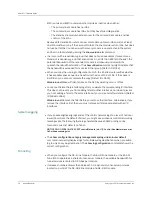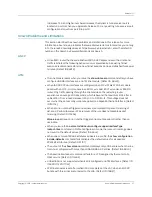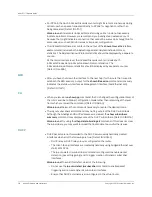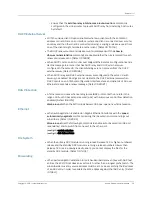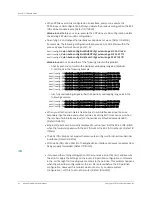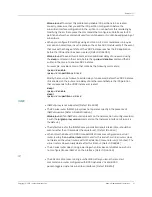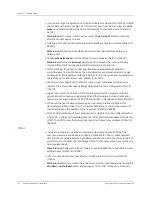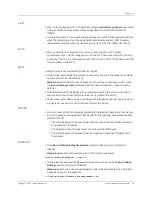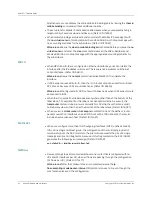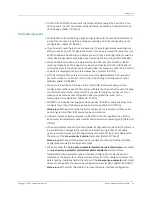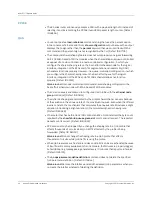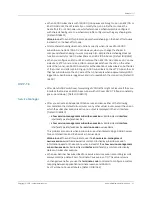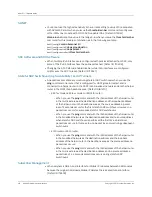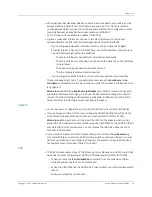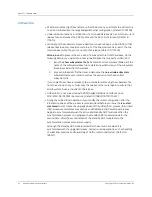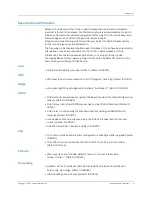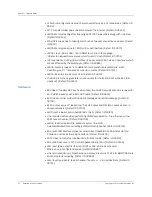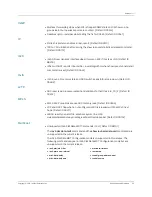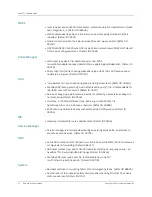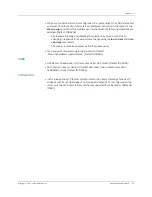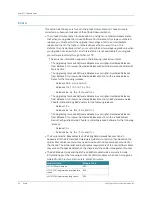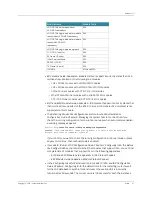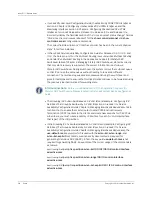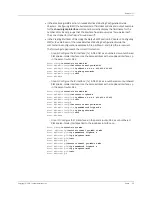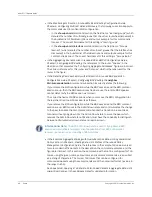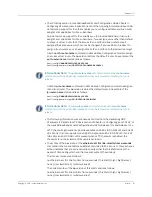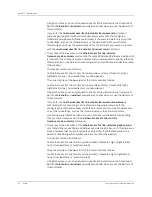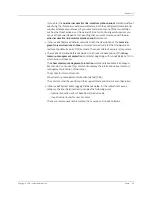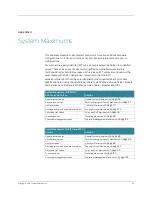
JunosE 11.1.1 Release Notes
50
Known Problems and Limitations
Copyright © 2010, Juniper Networks, Inc.
Unified ISSU
z
ATM line modules might reset after a unified ISSU when you attempt to add memory
to a VLAN subinterface in a large bridged Ethernet configuration. [Defect ID 178798]
z
Under certain conditions, a unified ISSU from JunosE Release 9.2.0p1-0 to the current
release fails, and causes the SRP module and the ES2 4G LM to reset. [Defect ID
179975]
z
When any of the subsystems is excluded for a JunosE release, a unified ISSU to that
release fails to apply conversion code to all of the line modules. As a result, the line
modules reset when they come up with that release. [Defect ID 179595]
Work-around
: To prevent the exclusion of a subsystem file from the release, do the
following before you upgrade to a new JunosE release that supports unified ISSU:
1.
Issue the
show subsystems file
fileName.rel
command, where
fileName
is the
name of the software release file, to determine whether any of the subsystem
files are excluded from the release.
2.
For each subsystem file that is excluded, issue the
no exclude-subsystem
subsystemName
command to remove the exclusion for the specified
subsystem file.
If you copied the software release to the router before removing the subsystem file
from the exclusion list, you must copy the release to the router again to ensure that
all subsystem files are included in the release.
z
Unified ISSU is not supported with 8000 bridged Ethernet interfaces on an
OC3/STM1 GE/FE ATM line module. [Defect ID 178811/178797/179547]
z
During the unified ISSU operation, if you modify the router configuration after the
initialization phase of the process is completed and before you issue the
issu start
command
to commence the upgrade phase of the unified ISSU process, the unified
ISSU procedure completes successfully and the stateful SRP switchover process
begins to synchronize between the active and standby SRP modules. When the
synchronization process is in progress, the standby SRP module reloads for the
second time. After the second reload of the standby SRP module ends, the
synchronization process also ends properly.
Although the standby SRP module reloads for the second time when it is
synchronized with the upgraded release, normal router operations, such as handling
of subscriber sessions and forwarding of traffic, remain unaffected. [Defect ID
185517]

